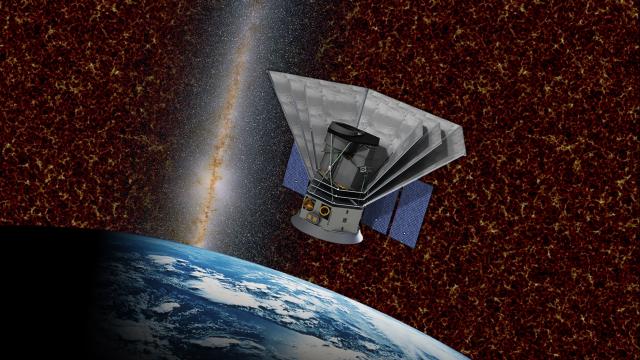A newly approved NASA mission, called SPHEREx, will use a space-based observatory to study the early conditions of the Universe and hunt for the celestial ingredients required for life.
Proposed in 2016, the Spectro-Photometer for the History of the Universe, Epoch of Reionization and Ices Explorer mission, or SPHEREx for short, was chosen by NASA from eight other proposed missions because it “offered the best science potential and most feasible development plan,” in the words of the space agency. The orbital observatory will survey space in both visible and near-infrared light, providing a “treasure trove of unique data for astronomers,” Thomas Zurbuchen, associate administrator for NASA’s Science Mission Directorate, said in an agency statement.
The two-year, $340 million mission (excluding launch costs), could be up-and-running as early as 2023. Caltech astronomer James Bock will serve as the project’s principal investigator. Other partners for the project include NASA’s Jet Propulsion Laboratory, Korea Astronomy and Space Science Institute, and Colorado’s Ball Aerospace.
SPHEREx will be used to analyse more than 300,000 galaxies, including ones as far as 10 billion light-years away. Accordingly, the observatory will peer back far into cosmological time, allowing astronomers to catch a glimpse of the early Universe. SPHEREx “will deliver an unprecedented galactic map containing ‘fingerprints’ from the first moments in the Universe’s history,” said Zurbuchen, adding that it’ll provide new clues to one of the greatest mysteries in science: “What made the Universe expand so quickly less than a nanosecond after the Big Bang?”
Astronomers will also use SPHEREx to study the millions of stars within the Milky Way galaxy, using it to search for the fundamental building blocks of life, such as water and organic molecules. Regions in which stars form from dense clouds of gas and dust will also be studied, along with protoplanetary disks, where planets form around young stars.
SPHEREx will complete surveys of space in six-month increments. This data will be used to create maps of the cosmos in 96 different colour bands—far more than previous efforts. The mission will also do some groundwork in preparation for future space telescopes, such as NASA’s James Webb Space Telescope and Wide Field Infrared Survey Telescope, by flagging candidate objects worthy of more detailed observations.
David Sobral, an astrophysicist at Lancaster University, said he’s “thrilled” that NASA is going ahead with SPHEREx, saying it’ll help astronomers in their continued quest to understand the origin of the Universe, galaxies, and even the origin of water in planetary systems.
“I think the fact that it will be surveying the entire sky, including long wavelengths, and also actually splitting the light in different wavelengths, will allow for some fantastic planned, but also likely many surprising, discoveries,” Sobral told Gizmodo.
“It’s not just about the hundreds of millions of galaxies that we will be able to study in detail, but also about the light from even fainter sources, some of them incredibly distant, which SPHEREx will be able to unveil and that will advance our understanding of the very early Universe.”
Sobral also appreciated the mission’s simplicity and careful design, which he said will “lead to fantastic science at very reduced costs.”
Personally, I love the fact that SPHEREx will provide four complete scans of visible space over the course of its two-year mission (at least). In addition to allowing for comparative analyses of the objects studied, the observatory will likely be used to corroborate data from other telescopes in the event of unexpected celestial phenomena, such as a supernova explosion.
This mission sounds exciting now, but we’ll truly appreciate the effort once the data starts trickling in—hopefully in as little as four years.
[NASA]
